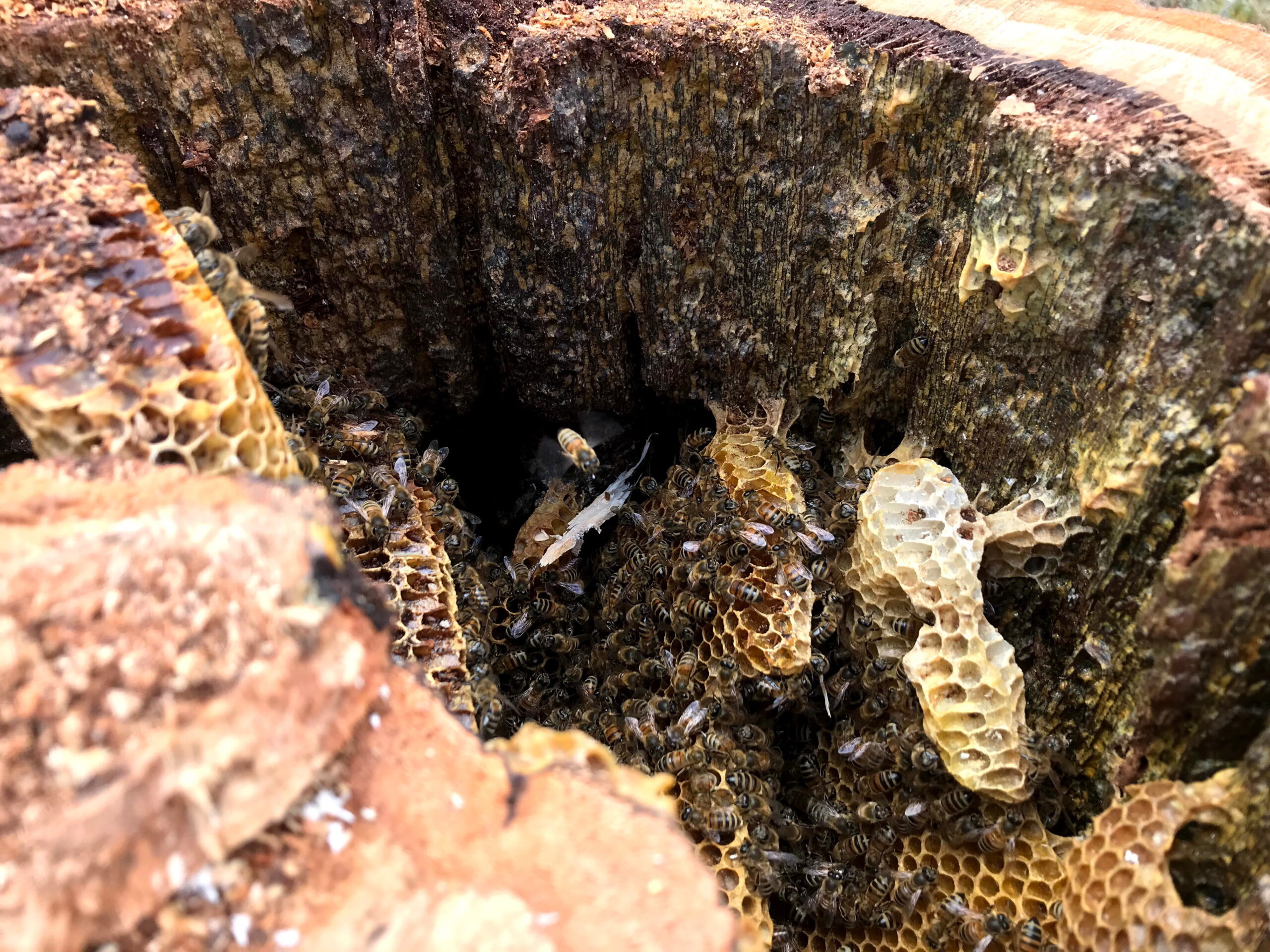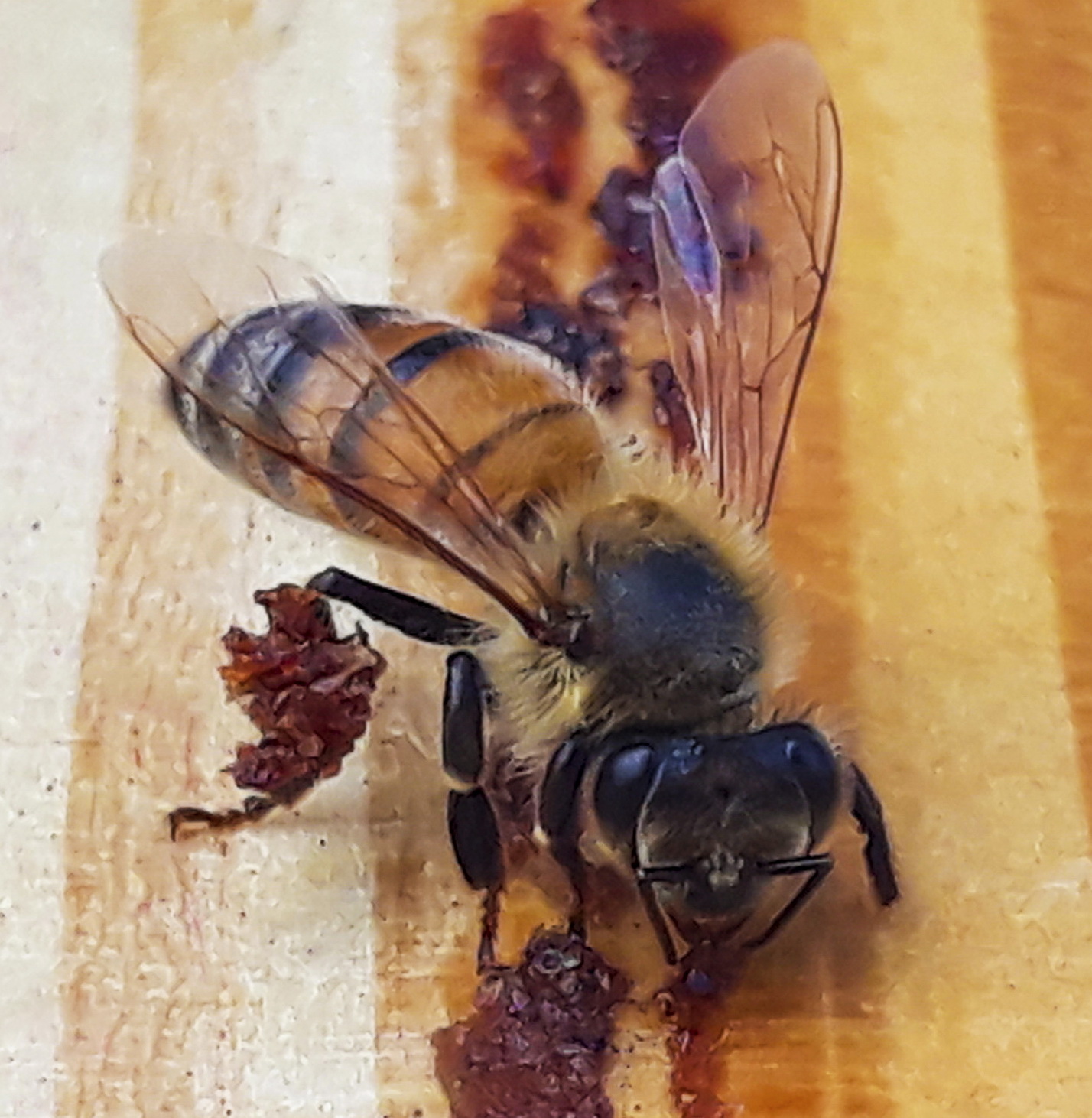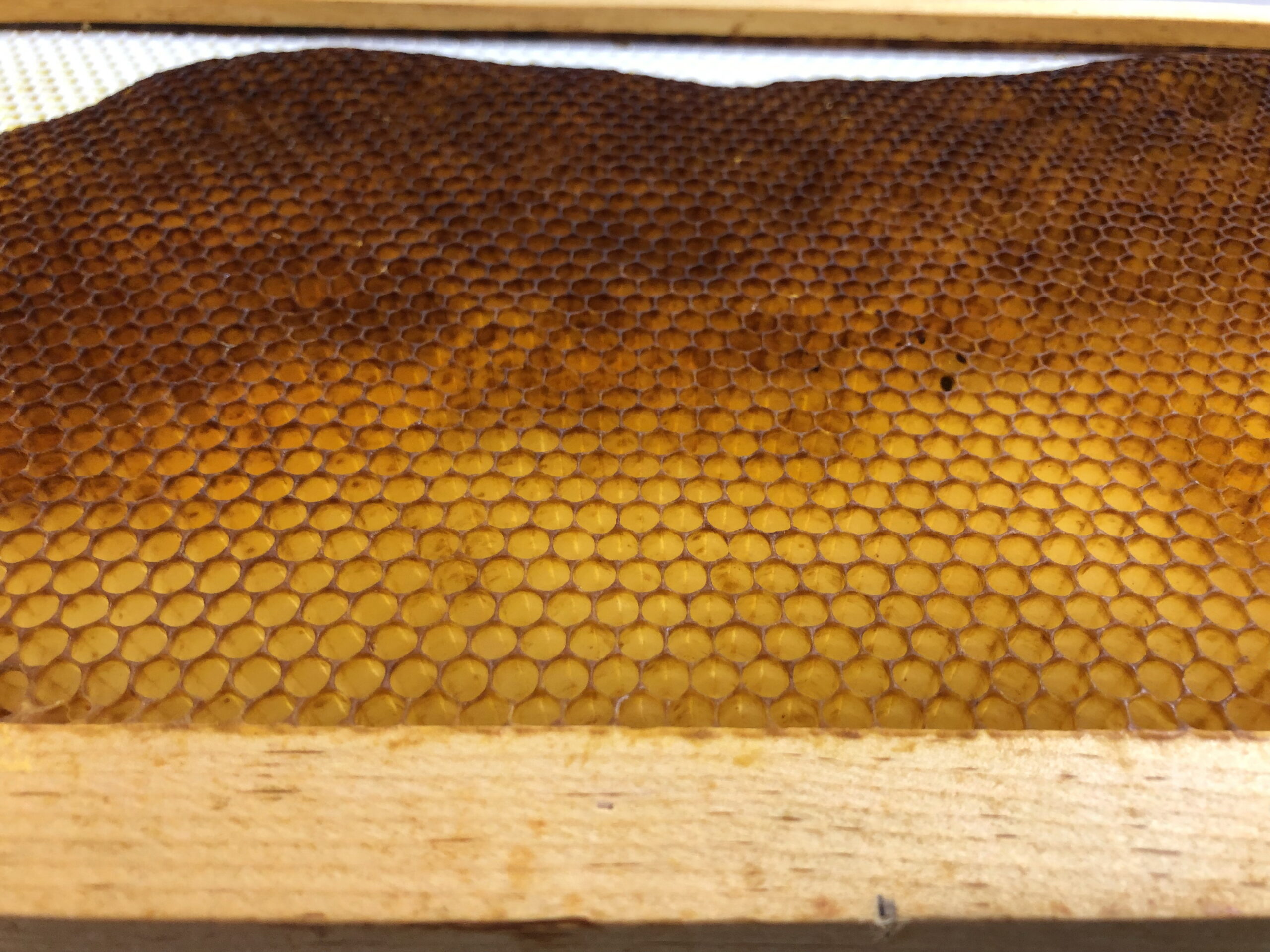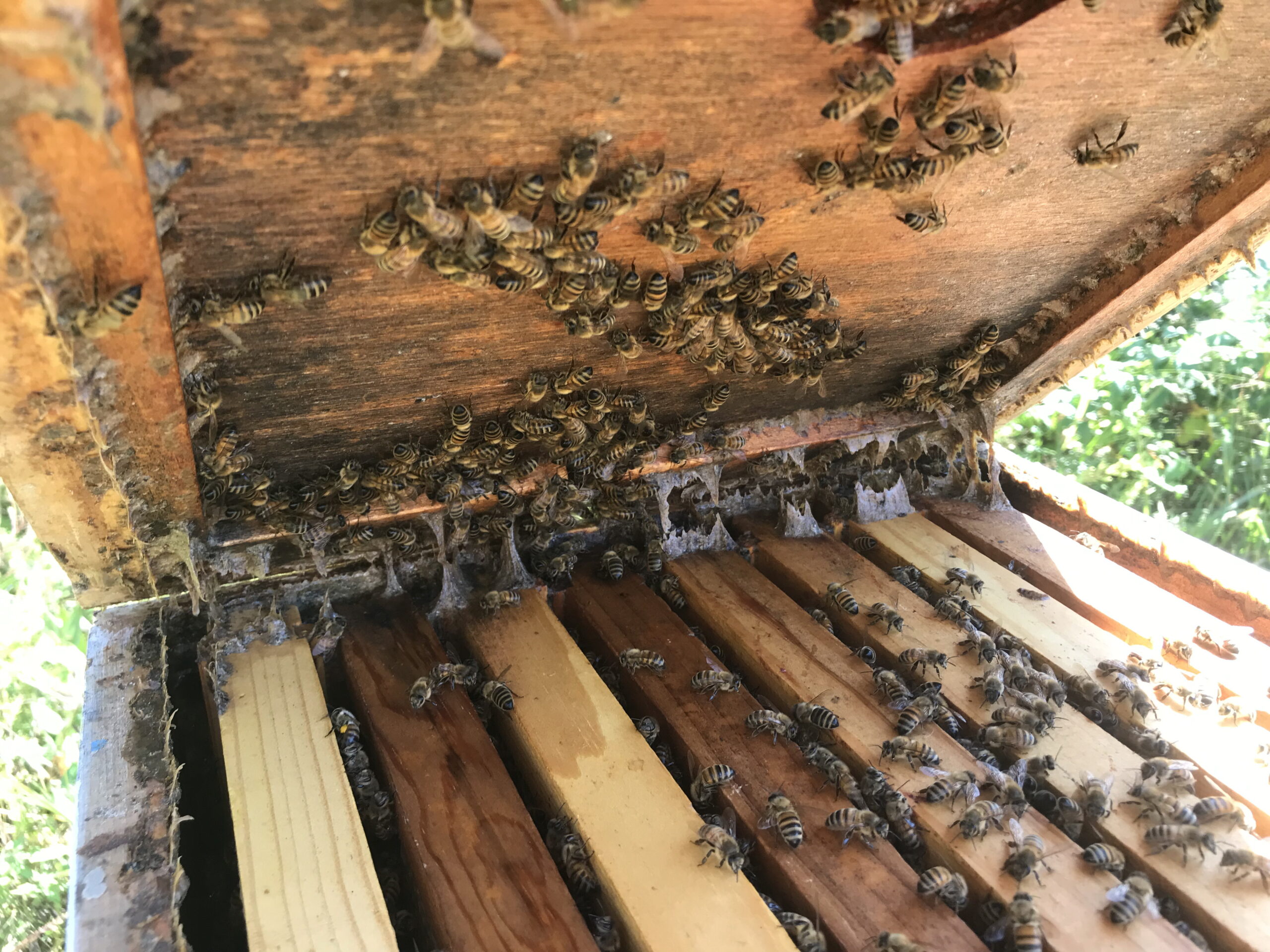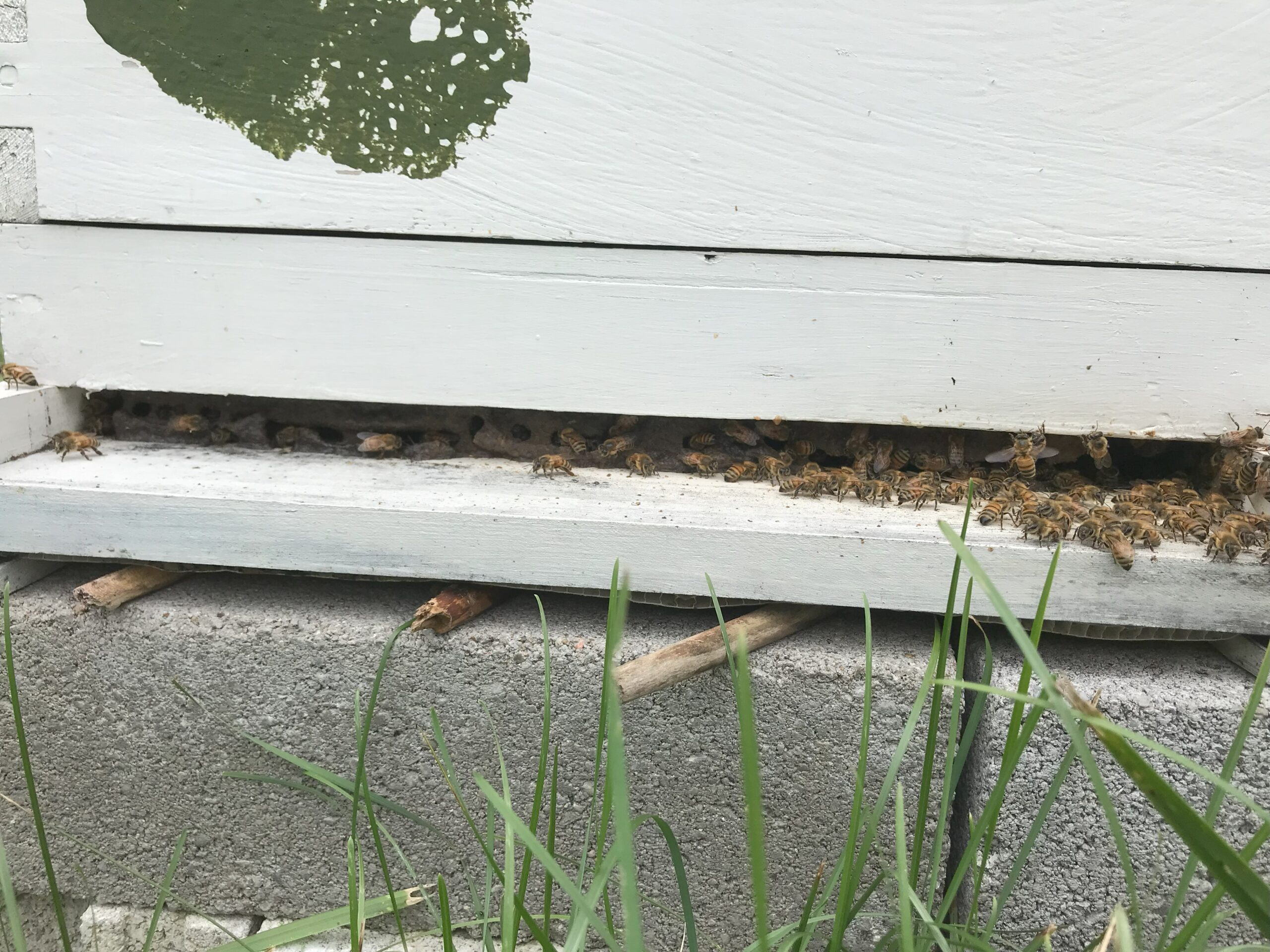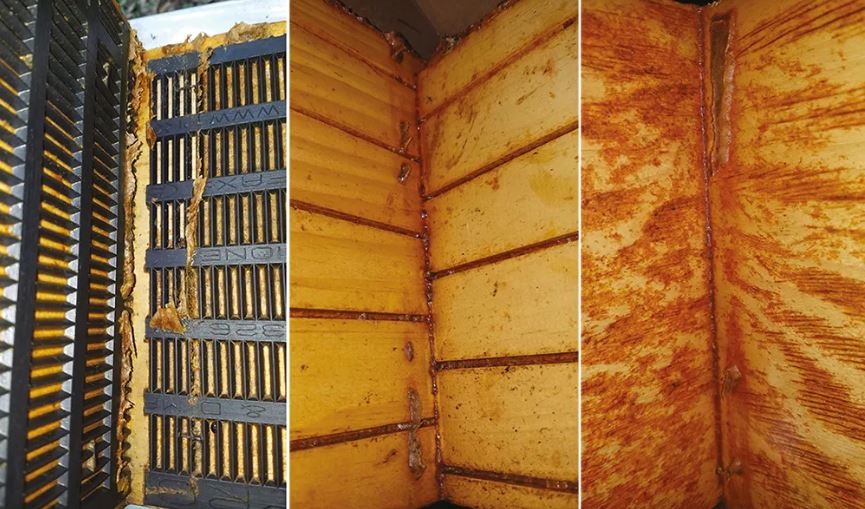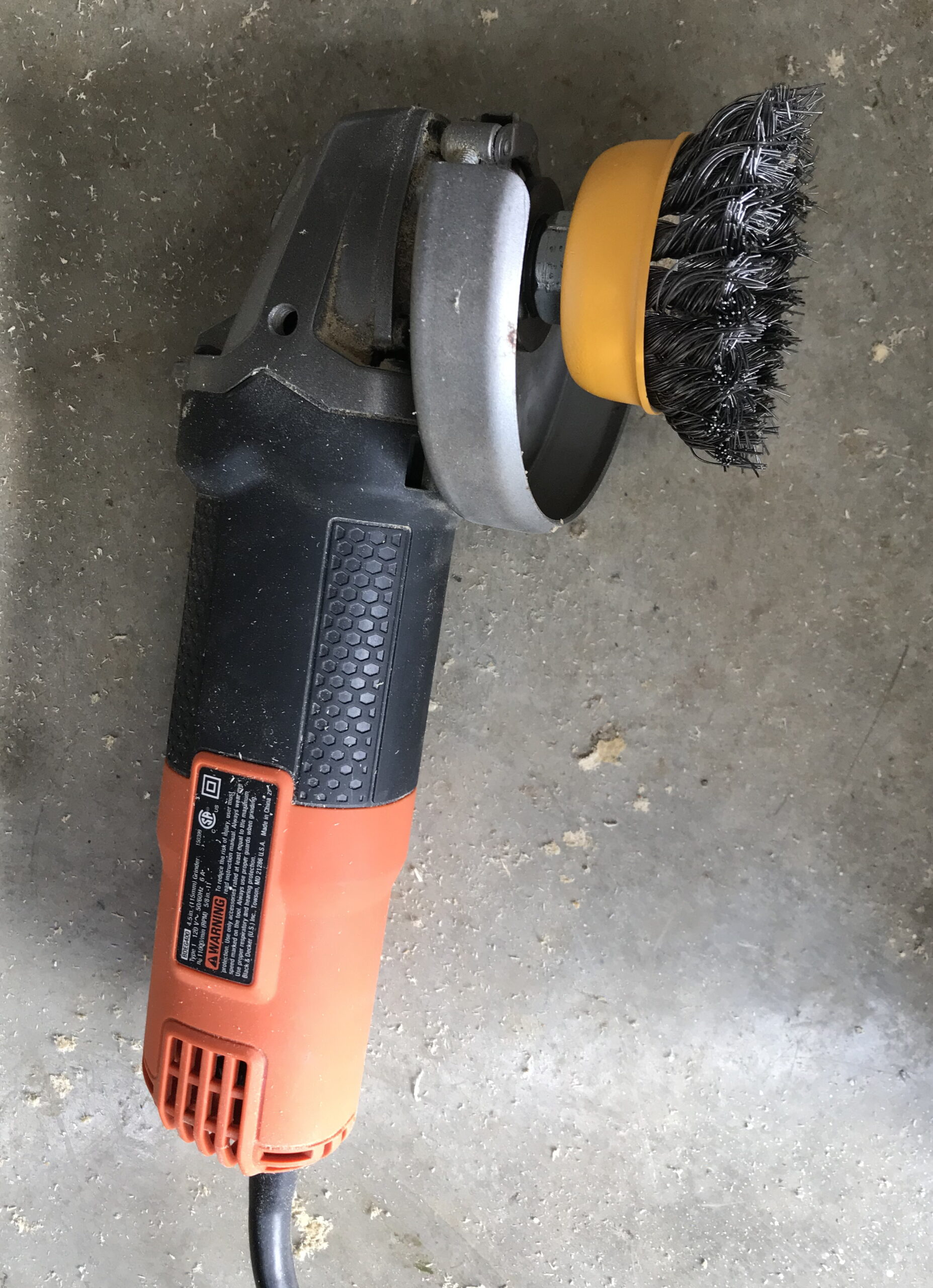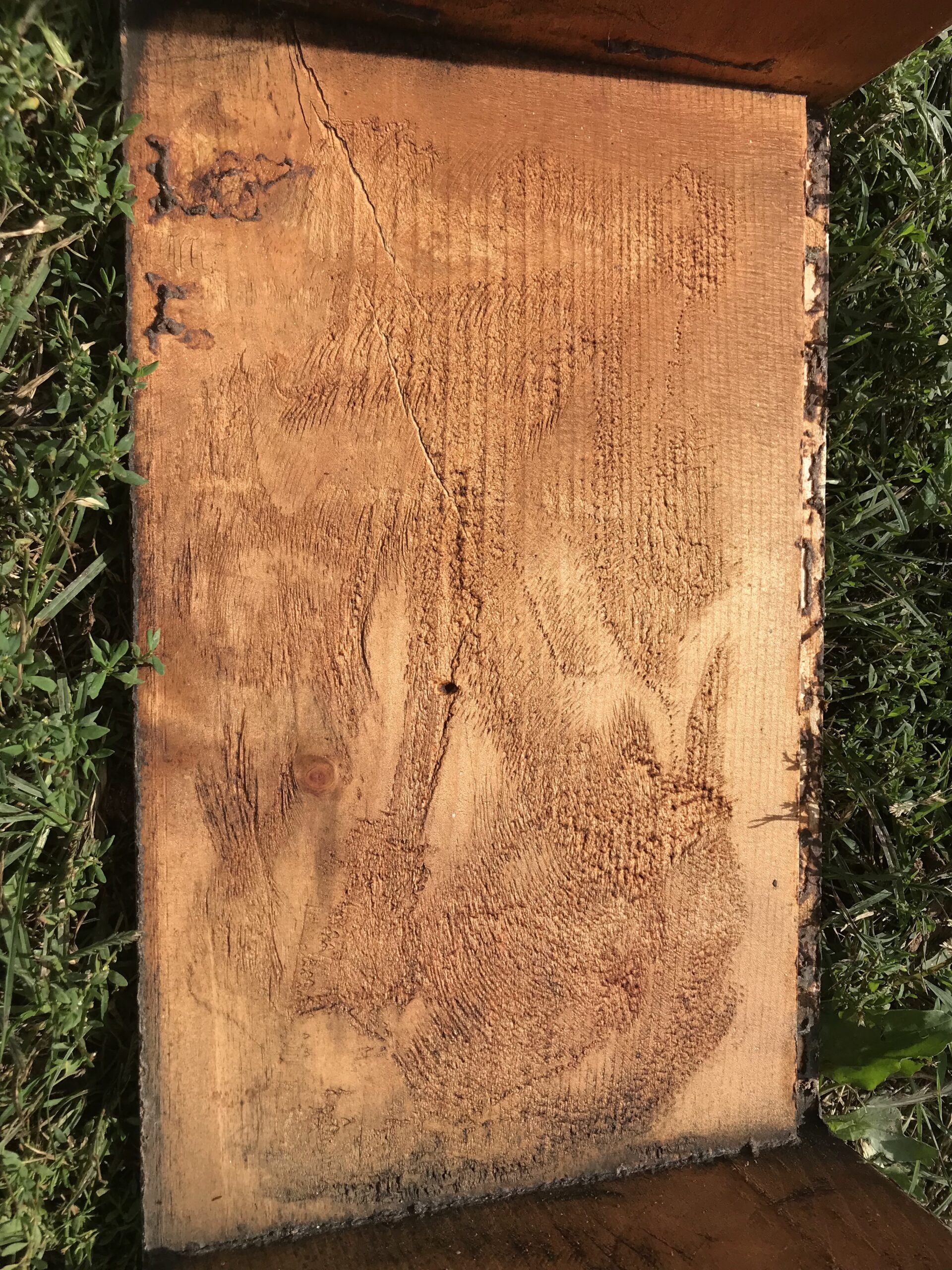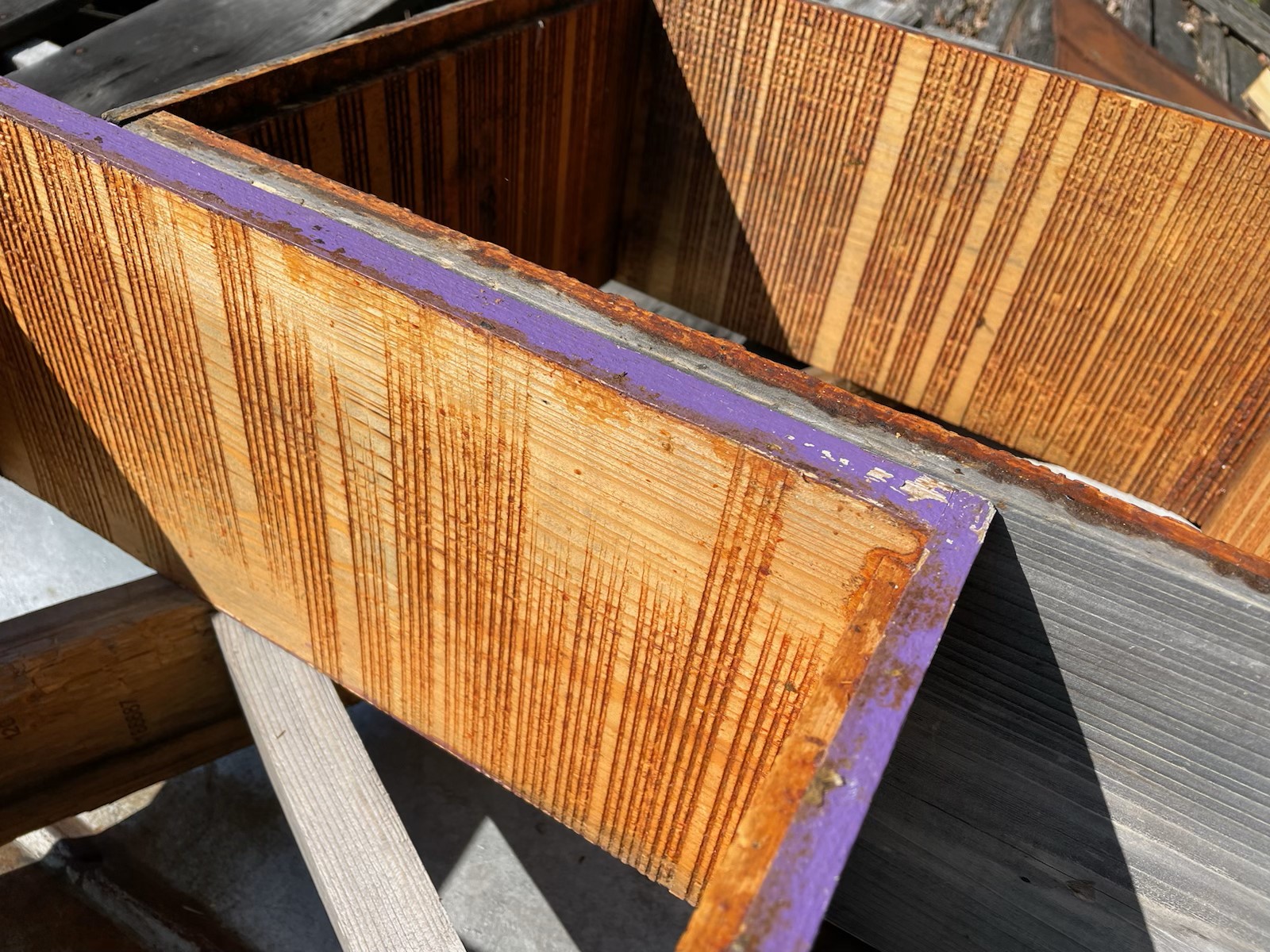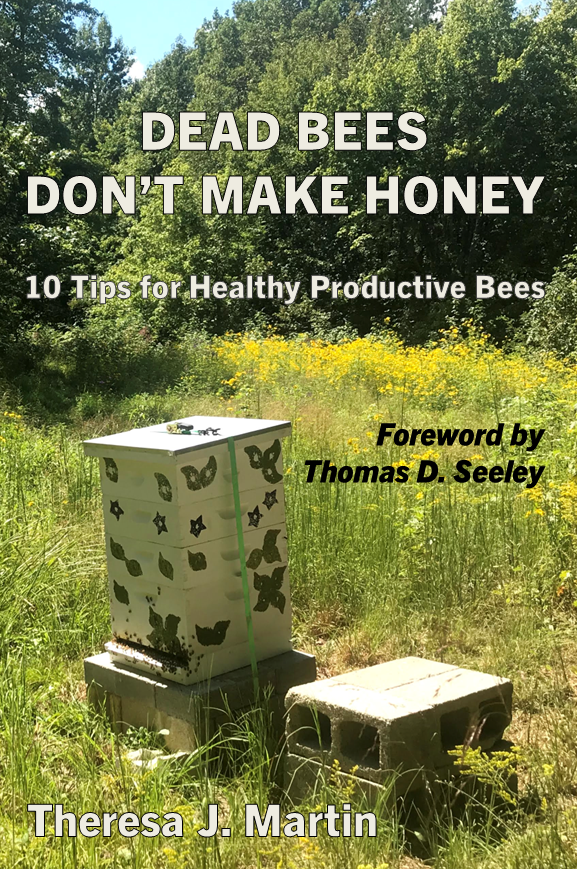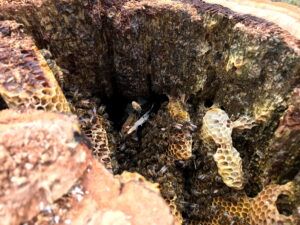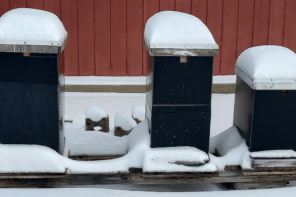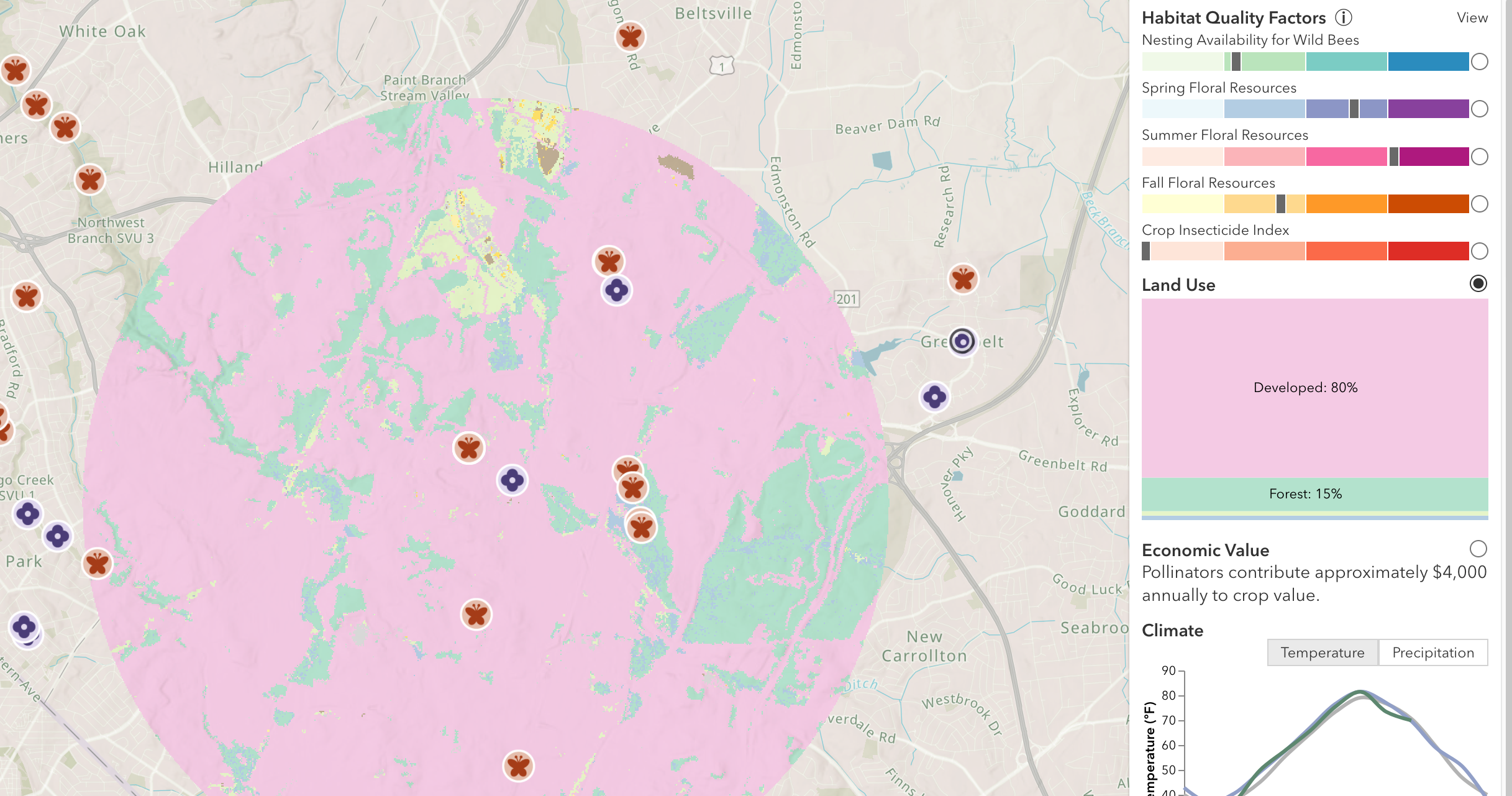Click Here if you listened. We’d love to know what you think. There is even a spot for feedback!
Read along below!
Propolis –
It’s Easy to Make it Rough
Theresa J. Martin
Propolis:
A Form of
Social Immunity
Propolis is a vital component of the honey bee immune system because it has anti-microbial, anti-viral and anti-bacterial properties. Propolis increases colony health and reduces the necessity for the colony to activate energetically expensive immune expression and engage in social immunity behaviors.
The honey bee immune system is complex and effective. Honey bees protect themselves from pathogens, both at the individual bee and colony levels. Individual honey bees have a wax-coated cuticle made of chitin and proteins that protect the outside of their body, which they keep clean of foreign objects through auto (self) grooming. Individual bees also have innate immunity, which is immunity they possess their whole lives, enabling them to mount a response against certain pathogens that enter their body.
As a superorganism with many individuals densely packed together, honey bees evolved to cooperate to fight pathogens at the colony level, which is called social immunity. There are many forms of social immunity. For example, a colony can raise the brood nest temperature, creating a social fever to kill the fungus that causes chalkbrood. Another social immunity behavior is allogrooming, which is when bees groom each other to remove foreign objects, such as Varroa destructor. Hygienic behavior is a third example, where workers detect and remove diseased pupae to remove pathogens from the brood nest.1
Fighting pathogens is costly and takes a toll on individual bees and the entire colony. Propolis acts as a natural defense against pathogens such as American foulbrood and deformed wing virus.2 Energetically expensive immune expression is lower in colonies with abundant propolis versus in colonies with less propolis. Bees coat the entire rough interior of a tree cavity with propolis, creating an immunity-enhancing propolis envelope (Figure 1). To maintain the medicinal value, bees “add new propolis on top of the old and restore the antimicrobial properties of the envelope. This propolis envelope surrounds the colony and likely serves many non-mutually exclusive purposes” (Simone-Finstrom et al., 2017, p. 4 and p. 2).3
Workers expend a great deal of energy collecting resin and depositing propolis inside their homes. A forager collects plant resin, which is produced by several species of trees. She breaks off a chunk of resin with her mandibles and presses it into her corbicula (pollen basket) (Figure 2), returns to her hive and walks to the location where propolis is needed. A second worker removes the resin from the forager, adds wax to the resin and deposits it where it is needed. The process of removing the resin and depositing the propolis can take anywhere from 15 minutes to several hours.4 Because bees do nothing that is superfluous, this demonstrates the importance of propolis to the colony.
Bees also use propolis as caulk and as building material to make their homes draft-free and sturdy (Figure 3). By sealing holes and cracks with propolis and making micro-adjustments to openings, bees control ventilation and humidity (Figure 4). They use propolis to make their homes safer from larger invaders — such as mice and yellow jackets — making entrances smaller or closing off holes that would otherwise need to be defended by guard bees (Figure 5).
Rough Hive Body Interiors
All beekeepers desire colonies with strong immune systems and an increased ability to fight pathogens, as these are the colonies that are more likely to be healthy and productive. To achieve this, I purposefully select for colonies that deposit the most propolis. I also avoid scraping off propolis. If there is propolis truly in my way, I scrape it off and drop it elsewhere inside the box. The bees will repurpose it, moving it to where they need it. At least they do not have to forage for it again.
Also, beekeepers can roughen up the inside of hive bodies, which stimulates the bees to smooth out the rough surface with propolis. Hodges and colleagues (2019) researched three methods for increasing propolis deposition in standard hive bodies, concluding that general roughening up of hive interiors is the best method of the three (Figure 6). In addition, using rough cut lumber produces a similar result.5
Before I give a hive box to my bees, I roughen up the inside. Regardless of whether the box will be used for brood or honey, I roughen up every deep, medium and shallow, using a wire brush connected to a grinder or a knot hole drill bit (Figure 7). This effort takes about two minutes per box. While the result is not as rough as the interior of a tree cavity, the bees deposit significantly more propolis on these roughened up interiors versus a regular smooth hive body (Figure 8 and Figure 9).
If you are a beekeeper who already has your equipment, roughening up the inside of your hive bodies or using one of the other methods Hodges and colleagues recommend might work for you. If you are a new beekeeper purchasing equipment, you might explore some of the rough interior options manufacturers have recently started offering.
Propolis is vital to honey bee health and their resulting productivity. Roughening up the inside of hive bodies is not difficult and provides significant immunity-boosting value that is continuous and everlasting.
Theresa J. Martin is the author of Dead Bees Don’t Make Honey: 10 Tips for Healthy Productive Bees, which includes a Foreword by Dr. Thomas Seeley. Theresa has achieved 99% colony survival and honey production that is twice the local average in her seven years as a beekeeper, with 20–25 colonies in Kentucky. Theresa can be reached at theresa@littlewolf.farm
REFERENCES
1The honey bee immune system is complex and effective. Larsen et al. (2019) and Laughton et al. (2011) describe innate immunity, adaptive immunity, and social immunity.
Larsen, A., Reynaldi, F. J., Guzman-Novoa, E. (2019). Fundaments of the honey bee (Apis mellifera) immune system. Review. SciELO. https://doi.org/10.22319/rmcp.v10i3.4785
Laughton, A. M., Boots, M., Siva-Jothy, M. T. (2011). The ontogeny of immunity in the honey bee, Apis mellifera L. following an immune challenge. Journal of Insect Physiology, 57(7), 1023-1032. https://doi.org/10.1016/j.jinsphys.2011.04.020
2Drescher et al. (2017) studied colonies with and without a propolis envelope and found significantly lower American foulbrood and deformed wing virus in nests with more propolis.
Drescher, N., Klein, A. M., Neumann, P., Yañez, O., & Leonhardt, S. D. (2017). Inside honeybee hives: Impact of natural propolis on the ectoparasitic mite Varroa destructor and viruses. Insects, 8(1), 15. https://doi.org/10.3390/insects8010015
3Simone-Finstrom (2017) describes the propolis envelope, detailing the multiple functions that increase health and survival.
Simone-Finstrom, M., Borba, R. S., Wilson, M., Spivak, M. (2017). Propolis counteracts some threats to honey bee health. Insects, 8(2):46. https://doi.org/10.3390/insects8020046
4Simone-Finstrom and Spivak (2010) detail the value of propolis for a colony of honey bees.
Simone-Finstrom M., Spivak M. (2010). Propolis and bee health: the natural history and significance of resin use by honey bees. Apidologie, 41(3), 295-311. https://doi.org/10.1051/apido/2010016
5Hodges et al. (2019) tested three methods of roughening up the interior of hive bodies to determine which encouraged honey bees to deposit more propolis. The three methods were to tack propolis traps to the inside walls of hive bodies, cut kerfs into the wood, and roughen up the walls with a wire brush.
Hodges, C., Delaplane, K., Brosi, B. (2019). Textured hive interiors Increase honey bee (Hymenoptera: apidae) Propolis–hoarding behavior. Journal of Economic Entomology, (112)2. https://academic.oup.com/jee/article/112/2/986/5199372







